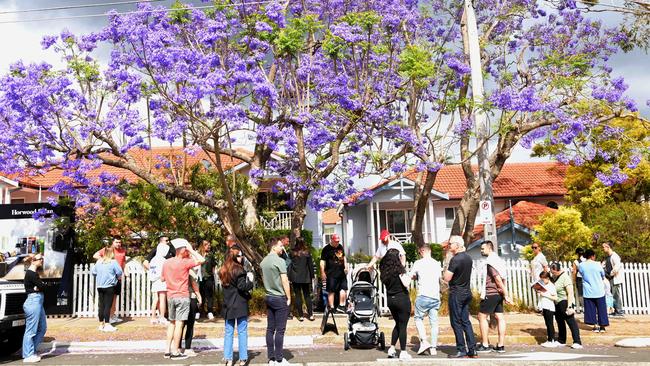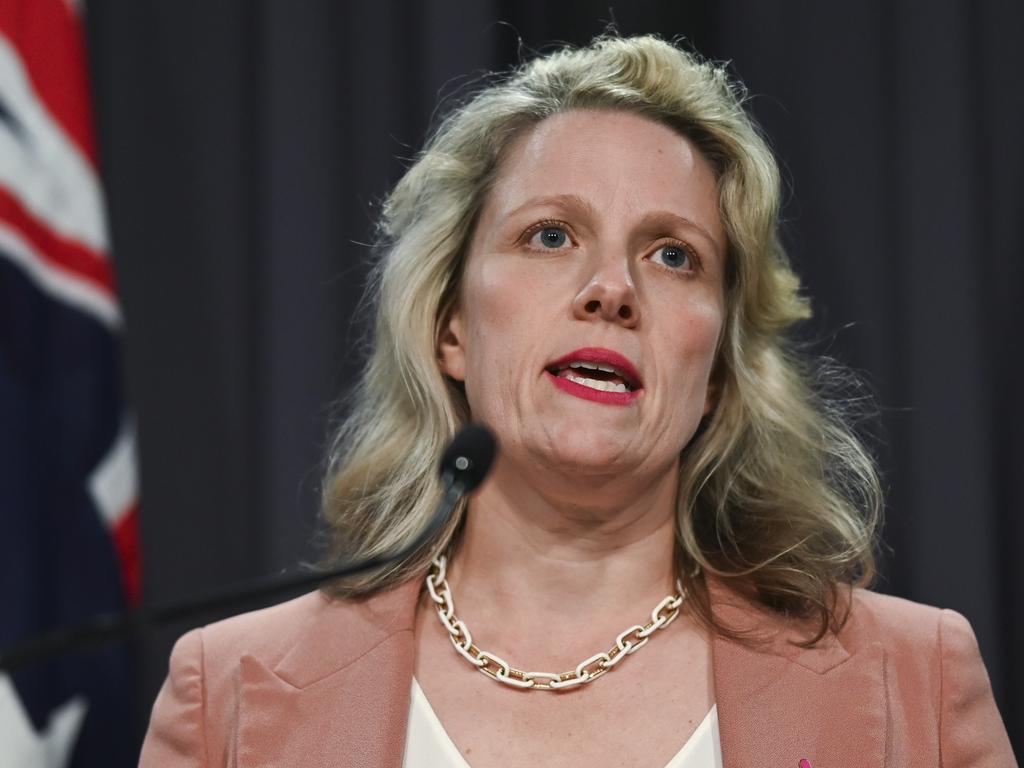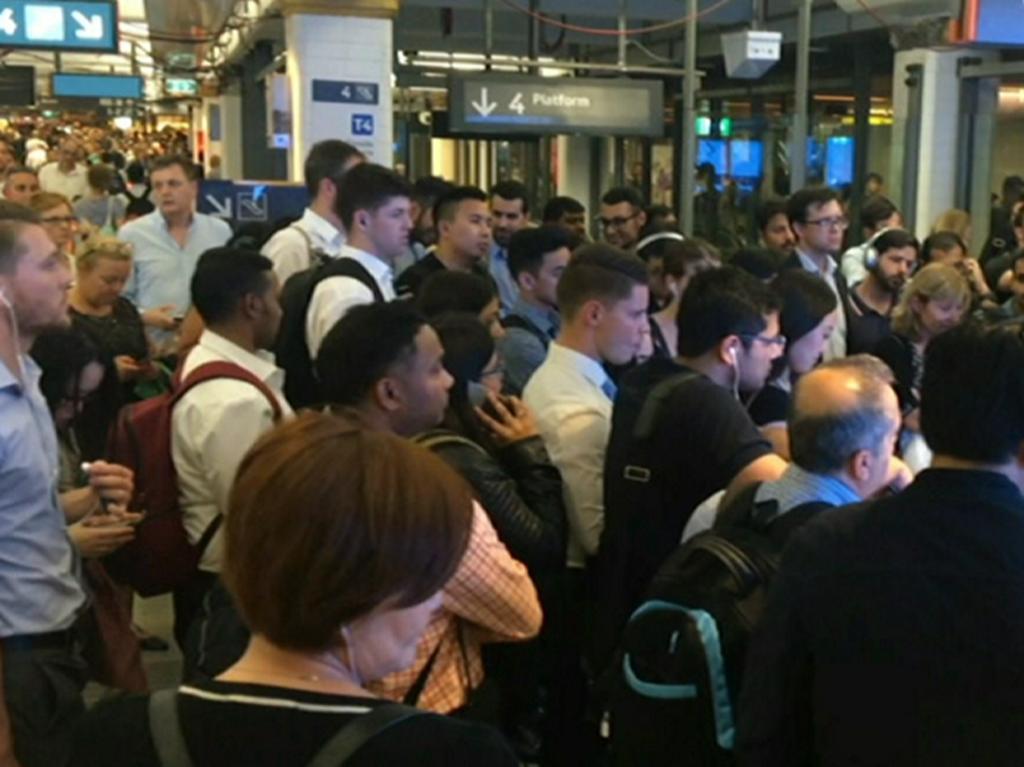How Australia could be cashing in on migration
It’s time for governments and businesses to profit on the biggest migration surge in our history. Can we pull it off?

Wage inflation has overtaken consumer price inflation. The business lobby fears pay rises not in line with productivity gains will make companies less competitive and rekindle price pressures, while ACTU secretary Sally McManus declared the recovery in pay an overdue win for working people due to unions and Labor’s new workplace laws .
Can we sustain this? Not if we revert to our old ways.
In the years leading up to the global financial crisis, wages were growing at around 4 per cent a year; after that shock, and the end of the mining investment boom, annual wages growth settled at 2 per cent before the pandemic. But inflation was below that for almost the whole period, frustrating the Reserve Bank because it couldn’t hit its 2-3 per cent inflation mandate.
Why were wages suppressed? Labor claims it was a deliberate design feature of the Coalition’s masterplan. Those years were a dismal period for productivity growth, of course, not helped by an investment strike. Workers were relatively cheap, capital was not – even with a prevailing official cash rate at half (often a third) of its current 4.35 per cent.
There were many possible culprits for wage stagnation (and ultra-low inflation), including globalisation, reduced union power, market concentration, the rise of gig workers and part-time jobs, and technological disruption.
High levels of migration had often been discussed as a factor, but the evidence was not conclusive; academics thought it wasn’t the main driver across the economy but could be pushing down wages at the margin, especially for younger workers given the surge in foreign students and skilled temporary workers doing low-paid work, legally and illegally.
Deep in the misery of Covid’s Delta wave, former RBA governor Philip Lowe said high migrant intakes had boosted economic growth but also diluted upward wage pressures as local firms used foreign talent to fill skills shortages.
“In my view, this is one of the factors that has contributed to wages being less sensitive to shifts in demand than was once the case,” Lowe said in a July 2021 speech, and added migration had also weakened incentives for local businesses to train workers.
In a new analysis last month, the IMF found Australia’s migration surges “have historically been associated with higher growth and favourable labour market outcomes, with negligible price pressures except in the housing market”.
This week, the OECD entered this contested space with big claims about migration and regional development; it was the culmination of four studies in partnership with Treasury. On average, migrants are highly educated and well-integrated into the labour market; they have a higher average educational attainment than people born here.
The project found migrants boost regional labour productivity, job opportunities for locals of all skill levels and innovation by bringing new ideas. “In contrast to the positive effect of migration on native (ie, people born in Australia) employment growth, the analysis finds no evidence of an impact (negative or otherwise) on the growth of native wages,” the OECD said.
Drilling into the pay records of 27 million workers during the pay stagnation of 2011-18, one of the papers found Australian regions with larger shares of migrants tend to have higher regional wages, “which provides evidence of a positive link between migration and labour productivity”. A region with a 10 per cent larger migrant share (say, 33 per cent instead of 30 per cent) has, on average, a 1.3 per cent larger regional wage difference.
Lower-skilled Australian-born workers benefit slightly more from migration than higher-skilled locals, said the Paris-based ideas factory now run by cigar-chomping, radical polyglot Mathias Cormann. That doesn’t signal “game over” in the debate but it does tell us a few things about the migrants we need and how we might get the most from their contribution. In a suite of four policy recommendations, the OECD suggests our governments should raise the workforce participation of migrant women (and secondary visa applicants) to “unlock untapped economic potential”; encourage higher-skilled migrants to settle in less productive regions; accelerate the recognition of foreign qualifications; and encourage migrants to settle in non-metropolitan areas, “equipping them with talent needed to foster regional innovation and balanced development”.
It’s still difficult to absorb the scale of the people rush, but according to the Australian Bureau of Statistics we’ve had the “largest net overseas migration estimate since records began”. In the 12 months to last June, overseas migration contributed a net gain of 518,000 people. Combined with a 106,000 natural increase, our population was 26.6 million at the end of June. In the 1990s it took three years to add that many new residents.
Sure, we have a much larger population in the modern era, so the raw numbers are big. As a proportion of the population, the migration inflow was 2 per cent, which was higher than any of the post-war “populate or perish” years.
The only time since Federation that eclipsed last year’s inflow was 3.2 per cent in 1919, when soldiers returned from the Great War, following four years of outflows during hostilities. The pandemic produced a single year of net migration loss, when departures outran arrivals by 85,000 in 2020-21.
While there was always going to be a migration bounce back, our officials were unprepared. Treasury forecast net overseas migration of 235,000 in Labor’s first budget in late October 2022. Just over six months later, in last May’s budget, the population unit ramped up its estimate to 400,000. Missed it by 30 per cent! At Senate estimates a chastened official acknowledged this was a “significant miss”.
Immigration numbers are front of mind for the Albanese government; Labor, fair or not, is vulnerable to claims of being soft on protecting our borders – from the wicked turn after November’s High Court decision on indefinite immigration detention to this month’s arrival of asylum-seekers on the northern Kimberley coast. But the human tide of those with visas entering via the front door is seen inside the government as a problem. The sheer size of the self-selecting inflow – driven by students, backpackers and temporary workers – is a reminder that in recent years it’s not the permanent migration program (set at 190,000 places this year) but temporary entry that is behind the boom.
Labor’s political opponents have been relentless in claiming it has been negligent and is pursuing a “Big Australia” policy. The government counters that the cumulative migrant inflow is still below what was expected in pre-Covid scenarios in December 2019, when the Coalition was in power. That “talking point” won’t hold for long.
But the catch-up period’s velocity has produced an economic boost to housing, transport and social infrastructure on the demand side; to labour supply on the other, perhaps as many as 100,000 more workers than if the pre-Covid trend had not been disrupted.
Labor needed a circuit-breaker via its migration strategy, which came out of the expert review led by former top public servant Martin Parkinson. The government took eight months to respond to the review. Good process? A logjam of other policy business in the front half of a first term? The voice? Yes, all of that, but Labor’s strategy, launched in December, also had to show a plausible path to “normal” levels of migration.
The soft targets to stop the people surge were international students and temporary workers. A rapid review by Christine Nixon detailed flagrant abuses, exploitation and criminal activity in the visa system. Labor also raised the minimum wage paid for temporary workers, cracked down on dodgy education providers and tightened the screening for student visas.
According to Home Affairs, the refusal rate for the student caseload is running at 20 per cent this year (or double the long-term average). Over the six months to December, the number of student visas granted fell by 31 per cent (on the same period a year earlier). Remember, last year was a bumper year for foreign students, peaking at 673,000 onshore at the end of October, with another 193,000 here on graduate visas. The education sector is not thrilled about a shrinking cash cow.
Put aside the unreliability of Treasury’s modellers. Home Affairs Minister Clare O’Neil claims that without the government’s actions there would have been 185,000 more migrants over the next four years. Labor is sweating on net migration dropping to 250,000 next financial year (after 375,000 this year). Westpac chief economist Luci Ellis puts today’s population problem in context: the economy and its infrastructure are trying to digest a “pig in a python”. “This boom is a one-off,” she says.
Parkinson set out a blueprint for renewal. A slowing economy will reduce numbers organically, while a living-cost squeeze provides political cover with pro-migration lobbies. Still, Labor has its work cut out in turning the visa system around.
O’Neil has flagged regional roadshows to identify opportunities and an enhanced “points test” for permanent migration, which must become the policy lodestar. Australia needs to fast-track construction and cybersecurity specialists, as well as essential workers in the care sector. But Labor risks losing focus and momentum amid the turmoil on boat arrivals and footloose former detainees.
This disruptive episode will pass; business leaders and university chiefs are hoping the government doesn’t lose the plot by overshooting in its visa tightening. Migration plays a fundamental role in our prosperity by lifting workforce participation rates and productivity growth, and keeping the country young and vibrant.
But we’ve mismanaged the system for years, content with short-run glucose hits to activity and revenue – and bugger the social cost – rather than patiently investing for long-term dividends. We must not squander this rare chance for a national migration reset.







In his pitch to voters in 2022, Anthony Albanese said Labor would “get wages moving”. The statistician’s verdict is trickling in. Last year, the wage price index increased by 4.2 per cent, its fastest growth rate in almost 15 years.